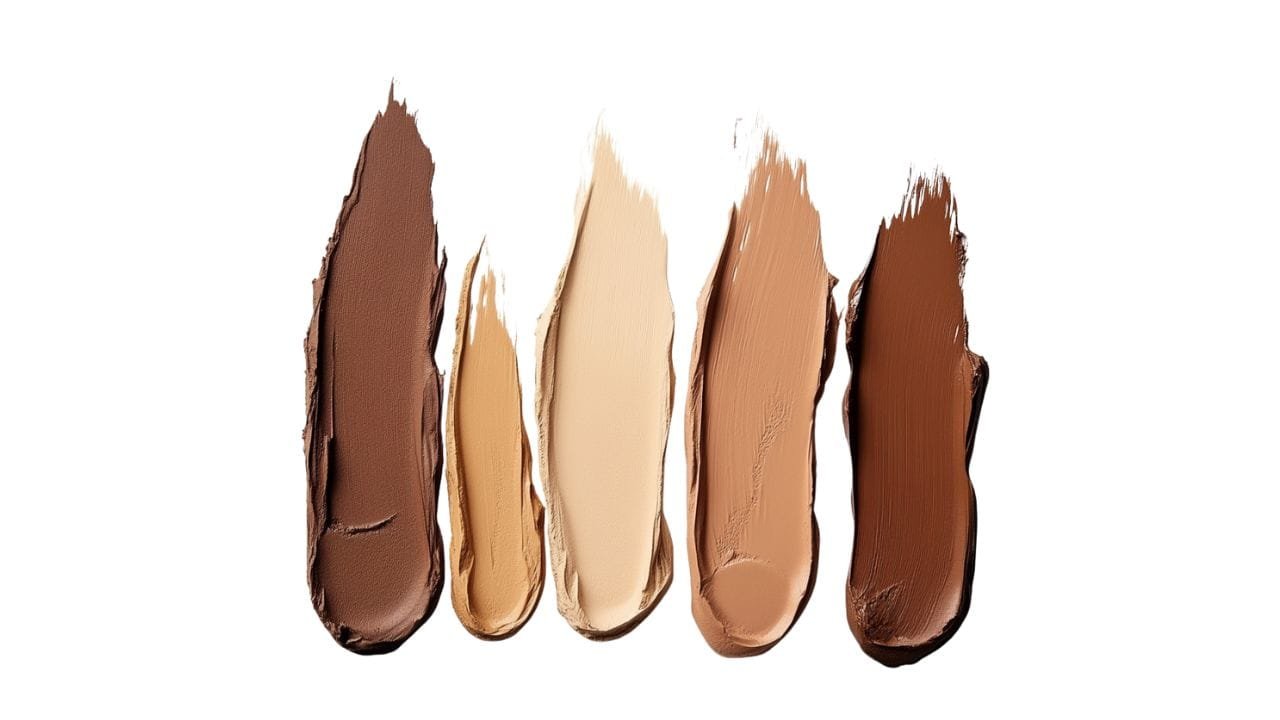Brown is everywhere in nature tree trunks, soil, coffee, and leather. It’s a warm, earthy, neutral color that you can create in many ways. Whether you’re mixing paints, dyes, food coloring, or even lights, this guide will show you how to make brown step by step.
The Quickest Way to Make Brown
Mix the three primary colors:
Red + Yellow + Blue = Brown
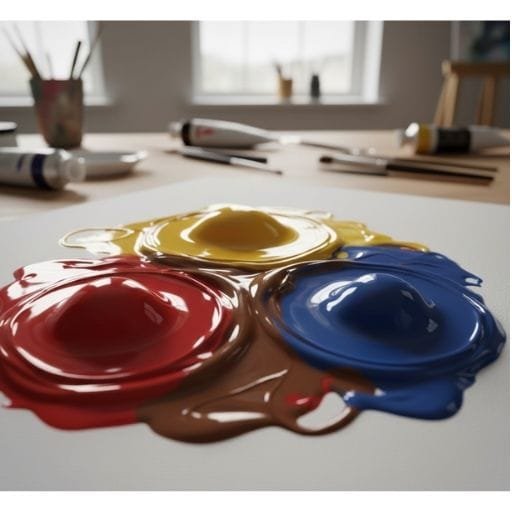
- Start with equal parts of each.
- To keep the brown warm, use more red + yellow and less blue.
- Adjust amounts to change undertones (reddish-brown, golden-brown, bluish-brown).
Making Brown with Secondary Colors
Instead of using all three primaries, try one secondary + its complementary color:
- Orange + Blue = Warm Burnt Brown (think russet)
- Green + Red = Earthy Olive Brown (think chocolate)
- Purple + Yellow = Muted Brown (gray-green undertones)
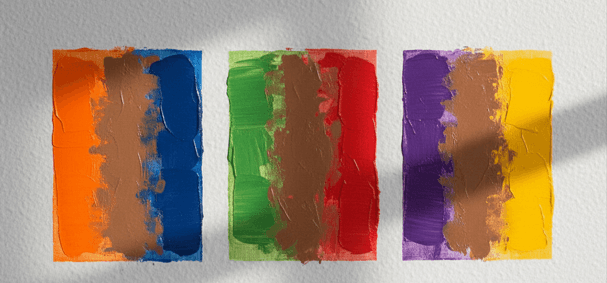
Adjusting the Hue
You can shift your brown by adding extra amounts of red, yellow, or blue:
- Brown + Red = Red-Brown (brick, mahogany)
- Brown + Yellow = Yellow-Brown (golden, tan)
- Brown + Blue = Blue-Brown (deep, cool espresso)
Brown hues
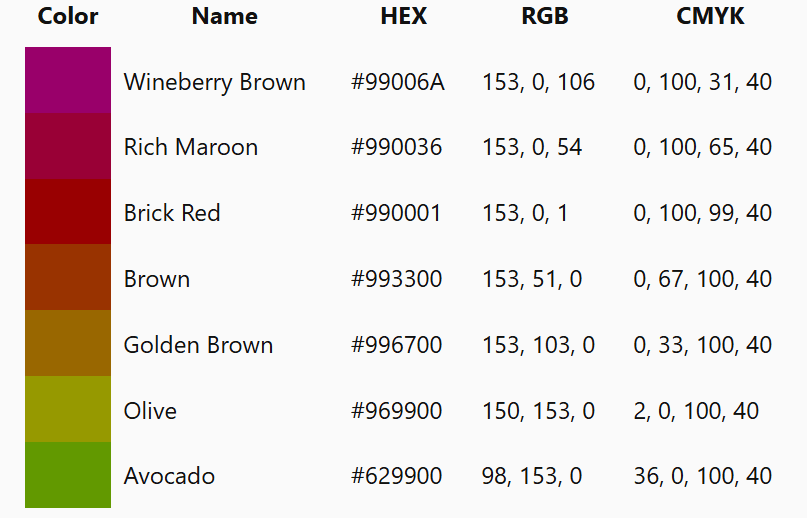
Making Tints (Light Brown)
To make brown lighter:
- Add white paint (for acrylic, oil, gouache).
- Add water (for watercolor, dye).
Brown Tints
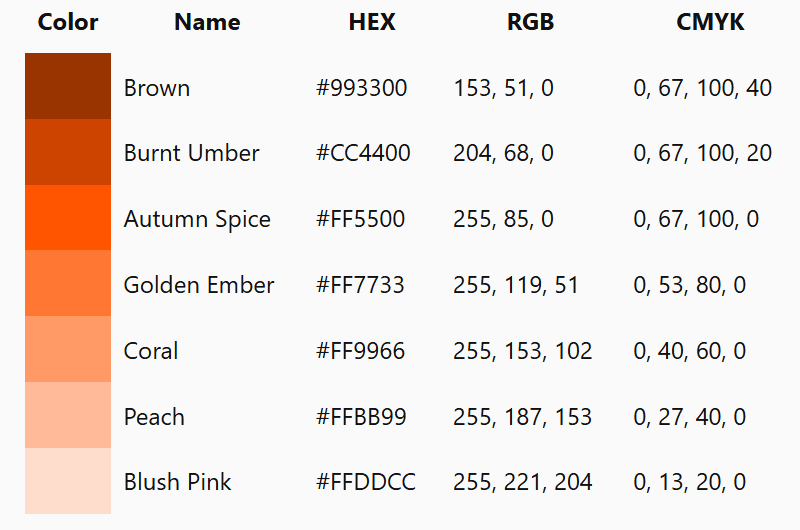
Making Shades (Dark Brown)
To make brown darker:
- Add a little black at a time.
- Or mix more blue into your base brown.
Brown Shades
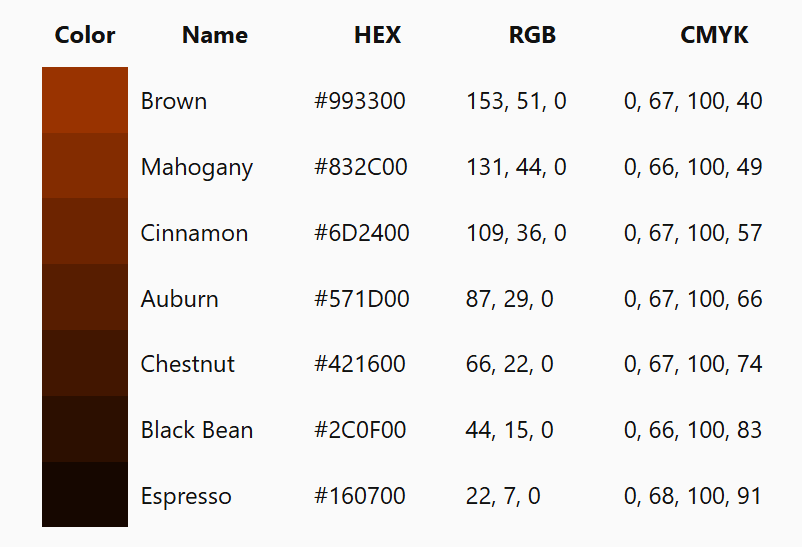
Making Tones (Muted Brown)
To mute brown:
- Mix with gray.
- Mix with its complementary (ex: teal with reddish-brown).
➡ Visual Idea: Side-by-side swatches: pure brown vs. muted brown vs. grayish brown.
Brown Tones
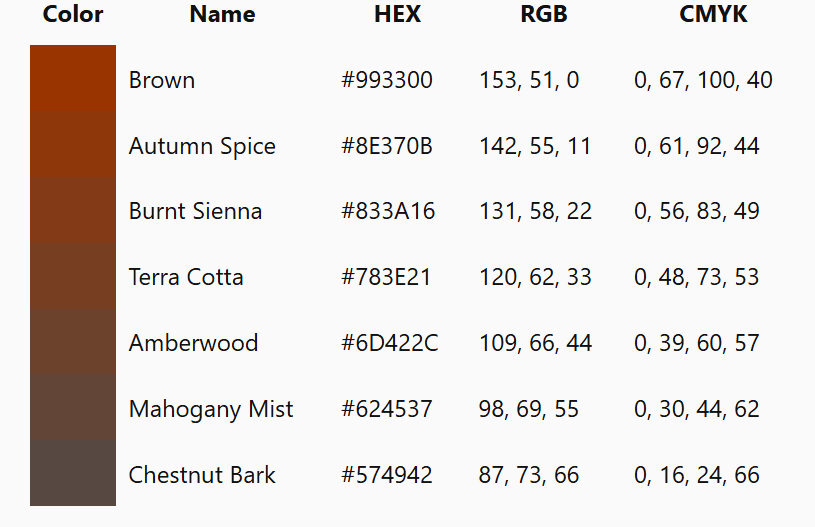
Crafting & Art Supplies
With Paints
- Acrylic / Oil / Gouache: Mix cadmium red + cadmium yellow = orange, then add ultramarine blue for brown.
- Watercolor: Same formula, but thin with water to control shade.
➡ Size Note: Start with 1 inch squeeze line of red, 1 inch yellow, pea-sized blue on a palette.
With Food Coloring
Use U.S. dyes: Red 40, Yellow 5, Blue 1.
- Mix 5 drops red + 3 drops blue + 2 drops yellow → stir → brown.
- Adjust with more yellow (lighter brown) or blue (cooler brown).
With Fabric Dyes / Tie-Dye
- Mix yellow + red = orange.
- Add a few drops of blue.
- Dilute with water for lighter shades.
With Pigment Powders (Mica)
- Blend red + yellow + blue powders dry or with binder (resin, soap base, epoxy).
With LED Lights
- Use the RGB model. Combine red, green, and blue at different brightness levels.
- Or shine white light through a brown gel filter.
Cool vs. Warm Browns
- Warm Brown → Add more red or yellow (golden, brick, chestnut).
- Cool Brown → Add more blue (espresso, ash brown).
Brown vs. Similar Colors
- Beige: A very light brown, softer and creamier.
- Chestnut vs. Mahogany:
- Chestnut = lighter, earthy, red-toned brown.
- Mahogany = dark, rich, luxurious red-brown.
Final Thoughts
Brown is one of the most versatile colors you can mix. Start with red, yellow, and blue, or combine secondaries with their complements. Adjust with white, black, or gray to get lighter, darker, or muted shades. From paints to food coloring to digital lights, brown is easy to create once you know the proportions.

